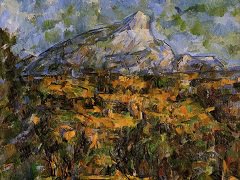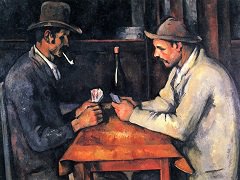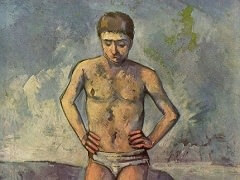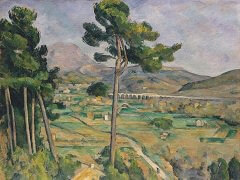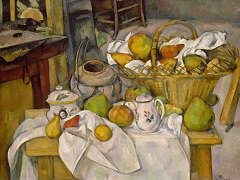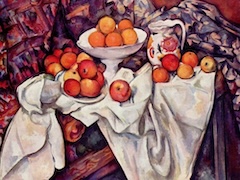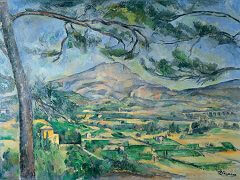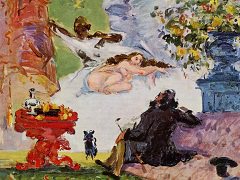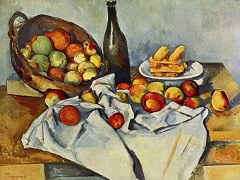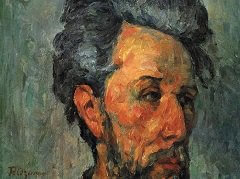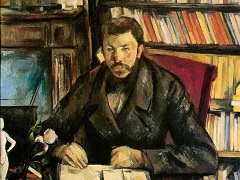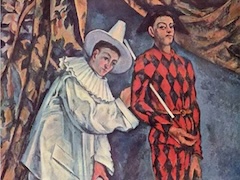Rideau, Cruchon et Compotier, 1893 by Paul Cezanne
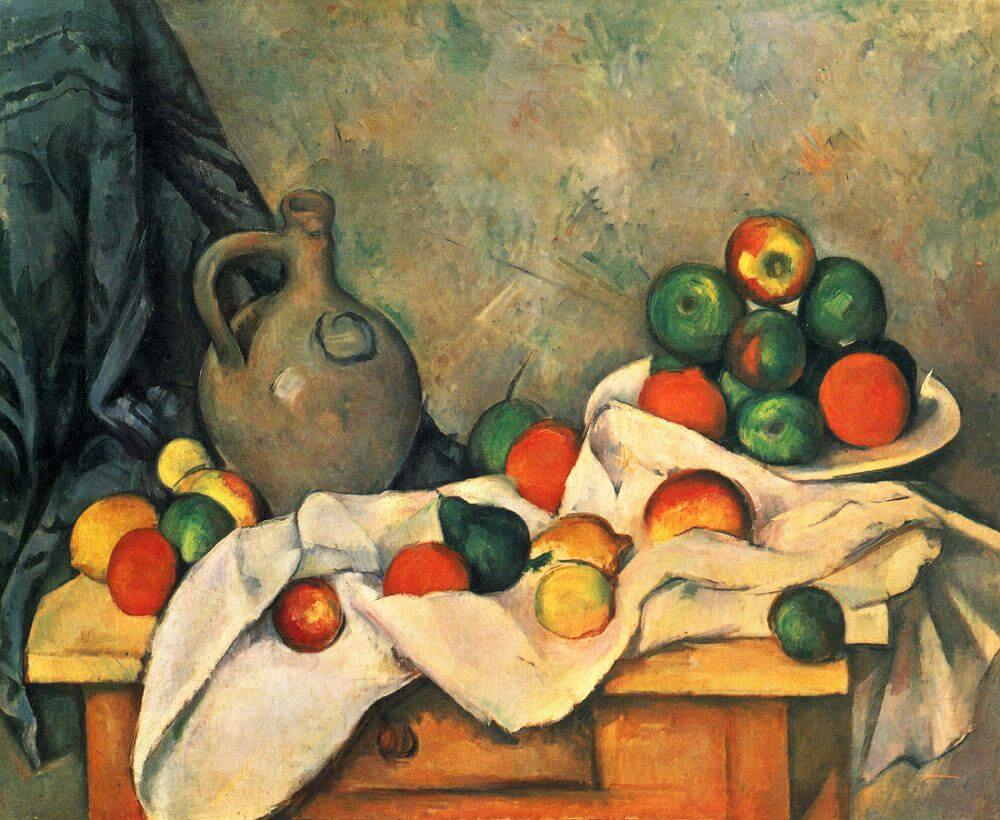
Rideau, Cruchon et Compotier, 1893 marks the maturity of great still lifes of Cezanne's middle and late periods. Beside the others, it seems a return to tradition in its studied outlines and great depth of shadow. It seems also one of the most obviously formal in the sober pairing and centering of objects, from the fruits on the cloth to the foliate pattern on the wall. But through the color, which has its own pairing of spots, the symmetries of the objects intersect or overlap; the same object belongs then to different groups. The resulting rivalry of axes gives a secret life to the otherwise static whole.
The color is beautifully mellow and rich within its narrow range. In the long passage from light to shade, different in every object, each color unfolds its scale of values in visible steps. How solid the forms emerging in atmosphere, deep shadow, and light through subtle shifts of color from transparent tones to luminous pigment of a wonderful density and force!
Indifferent to the textures of objects, Cezanne recreates in the more palpable texture of paint the degrees of materiality: the opaque, the transparent, the atmospheric, and the surface existence of the pictorial itself in the ornament on the papered wall - the shadow of a shadow, an echo of his own art.
To define the forms in this unstable medium of air and light in which the colors at the contours merge with the surrounding tones applied in similar slanting strokes, Cezanne has drawn dark lines around the objects. More definite than in his other pictures, these outlines are not as uniform and thick as the enclosing lines that later artists derived from them. Gauguin, who owned and passionately admired this still life, reproduced it in the background of a portrait in which he took one of his first steps towards a style of abstracted decorative lines.
Most original in the drawing are the ellipses of the compotier and glass. Just as Cezanne varies the positions, colors, and contours of the fruit, he plays more daringly with the outlines of the vessels. The ellipse of the compotier becomes a unique composite form, flatter below, more arched above, contrary to perspective vision and unlike the symmetrical forms of the glass. In its proportion, it approaches the rectangular divisions of the canvas and in its curves is adapted to the contrasted forms of the apples and grapes, the straight lines of the chest, the curves of the fruit below, and the foliage on the wall. A line drawn around the six apples on the cloth would describe the same curve as the opening of the compotier. If we replace it by the correct perspective form, the compotier would look banal; it would lose the happy effect of stability and masculine strength.
This magnificent painting, at once subtle and strong, has the grave air of a masterpiece of the museums. Like other masterpieces by young artists who aspire to a grand order, it is a little meticulous and stiff. The idea of the work, its method and devices, are more tangible than in Cezanne's later art; but this absorbing seriousness and frankness are part of the charm of the work.
Rideau, Cruchon et Compotier is considered the most expensive still life ever sold at an auction.


